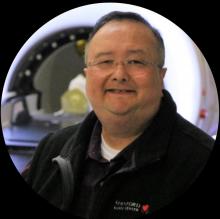Using Agile to Navigate through Medical Device Regulations

When you test medical device software—especially software for robotics performing extremely safety-critical tasks, like radiosurgery on the brain—you must be very careful. And yet when development wants to push a cadence of two weeks per sprint, every sprint, over and over and over again, well … you’ve just got to keep up!
Things move fast, so you must be quick in writing test steps, executing them, and reporting on them. Of course there will be bugs, and you’ve got to be fast there too: Recreate them, record them, and then receive the fixes and resolve the issues.
You need a process that supports the rapid-fire cycles of develop-build-test-release. There’s no time for wasted steps or a ridiculous and repetitive runaround. To stop the madness, you‘ve got to call a time-out: Isolate and identify the problems, then fix them.
Your greatest gains will likely be in optimizing your process. Combine steps and rearrange where you can. Eliminate needless redundancy. Interpret the regulatory requirements not as a set of disabling constraints, but rather as an enabling function presenting the challenge to find the optimal route to navigate through. It is up to you how you want to build your product.
Medical device regulations often define the “what” of what must be delivered, and less often the “how” of how that is done. Take in a global view of your standard operating procedures (SOPs) for software development, product creation, and software release. You’ll likely find zigs and zags of required tasks and deliverables. Align those activities and straighten the paths through them.
Similarly, you can analyze the SOPs for document control, design control, and configuration management. Optimize them by tapping into the experience and skills of everybody on your team, because a single person almost never has all the best answers. Ask, “Is there a better way?” It will take discussions, consensus-building, and hard work, but it will be worth it.
In non-regulated industries with fewer constraints, there are checkpoints and milestones you would decide are important. Do the same here to find the best way through. In every case, for any activity that doesn’t provide value, question its legitimacy. They become candidates for elimination—all of them.
Navigating the best path is like a Formula 1 race, with curves and straightaways, hairpins, pit stops, and off-camber turns. Sure, there are constraints, but the team who navigates them most optimally, with the best overall strategy—while still being safe and following the rules—will win the race.
Be creative, but be compliant. Be conscientious, and be courteous. In the end, you will reach the finish line.
Roy Tuason is presenting the session Safety-Critical Software the Quality Agilist’s Way at STARCANADA 2019, October 20–25 in Toronto, Ontario.

